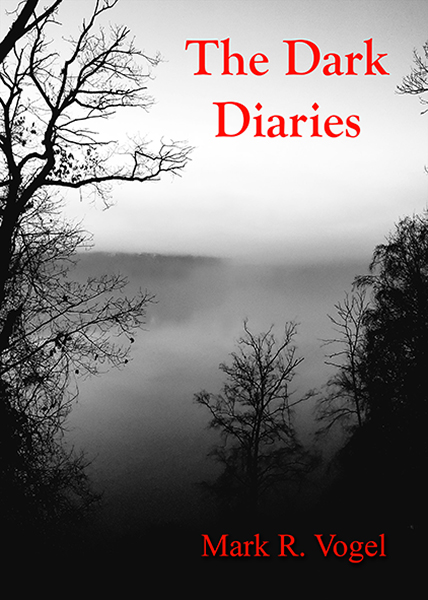Warning: The following is a literal “review” of Danny Steinmann’s Friday the 13th: A New Beginning in that it contains spoilers.
Paramount Pictures, ready to hang up their Friday the 13th franchise after having killed off Jason Voorhees a year prior, resurrected their antagonist after Wes Craven’s A Nightmare of Elm Street rejuvenated the waning slasher genre. Ironically, during Danny Steinmann’s fifth installment in the franchise, we see a banner which reads “Help Destroy Family Values.” Excluding the “family,” this is exactly what Friday the 13th: A New Beginning does as it usurps, not only slasher dogma, but iconoclastically flies in the face of Friday the 13th custom as the director coyly leads his unknowing audience into an exquisitely executed game of cat-and-mouse.
Several years after saving his family by killing serial killer Jason Voorhees, Tommy Jarvis (John Shepherd) is transferred from the Unger Institute of Mental Health to Pinehurst, a halfway house for children. While attempting to cope with his childhood trauma, one of Tommy’s co-boarders, Victor (Mark Venturini), goes into a violent rage and kills another Pinehurst resident, Joey (Dominick Brascia), with an ax. Shortly after Victor is taken into custody, a mass murderer begins his killing spree. Is it Jason back from the grave, has Victor escaped the police, or is another assailant on the loose?
The first sign that Steinmann is attempting to do something different with the series is witnessed at the commencement of Frame One. Instead of opening with a recap of the previous outing as each film before Friday the 13th: A New Beginning does, the director begins with what is quickly revealed to be a dream sequence, something which we–over the course of four Friday features–expect to appear at the close of each movie. Sardonically, the scene involves two gravediggers hoping to exhume Jason Voorhee’s corpse, a scenario which is so iconographic to be all but exclusively limited to its proprietor, James Whale, via his Frankenstein. Obviously, given the constraints of a sequel, Steinmann is allowing us to automatically eliminate the possibility that he is hoping to imitate the success of the famed director as the only other option left to us is that he is positing a simultaneous homage as well as parody. Hence, the tone, theory, and import of what is to come is evidenced within the prologue of the feature. Fortunately, Steinmann sustains such sensibilities throughout.
Much like Whale, a director who consistently played alongside, as well as with, his audience, Steinmann insinuates that we are going to be given much the same in respect to the Friday the 13th catalogue. After four films, the creators of the Friday films had their audiences well trained. As such, we come to anticipate certain things from the Jason saga, such as a corpse being thrown through a window and Jason entering by the same means shortly thereafter; our antagonist obliterating one door in each installment; the trademark stabbing from under a bed or facsimile thereof; an unreliable epilogue goaded by insanity, fatigue, or the like; and, of course, gore and nudity. Granted, we get all of these, but with a very satisfying twist for Steinmann, aware of the rut which his forerunners had dug, uses our predispositions to his advantage.
Many viewers reject the feature, in lieu of the fact that it is consummately entertaining for, as it is commonly known, the work does not house Jason par Jason. Instead, we are given an imposter. I don’t genuinely believe that most viewers react in the manner in which they do solely due to our antagonist not being the famed killer, but that they reject the film because the mode, style, and grace by which Steinmann presents his story is so convincing, despite various hints that something is amiss, that such naysayers cannot humble themselves into admitting they were duped to such a disconcerting degree (which will become an irony, for a year later Fred Walton would present his genre and critically-applauded mock slasher, April Fool’s Day). For example, early in the work, the filmmaker seems to flippantly dismiss his audience in that no rhyme or reason is offered in respect to the genesis of Jason’s reappearance as the killer’s iconographic mask is noticeably, distractingly altered from its last sighting. With this, we–after a seeming gross of throwaway dialogue over the course of five years–ignore what appears to be more of the same as Reggie (Shavar Ross) drops a rubber spider in front of the camera for what we think is another gratuitous “boo” moment as he asks, “You scared of spiders? You scared of rubber spiders? You scared of rubber spiders on strings?” which, if we were to issue the film benefit of the doubt, symbolically suggests a knowing fiction is being, literally, dangled before our eyes.
Yet we continue carelessly on as the body count, as par from the series, escalates from the previous chapter but, instead of plus-one, it does so by more than a handful of premature demises. As we think nothing of the fact, we likewise complain that what lies before us is, once more, the same film under a different title which, sadly for us, continues to suffer from the curse of diminishing returns in respect to subsequent sequels as the Puritanical moral code appears to likewise have been arbitrarily abandoned due to lethargy. (The mere possession–not use mind you–of alcohol and the suggestion of sex results in death as an undeniably innocent character, Matt (Richard Young), who is bludgeoned shortly thereafter, thereby making the killer truly frightening for there is no discernable pattern to his slayings.) Moreover, as two characters descend the metaphorical vaginal canal that is the woods before returning from whist they came so as to oblige Freudian protocol and enter the symbolic womb that is a barn, we shake our heads in shame as the thematic motif of the family carried over from Joseph Zito’s previous installment is present but for no discernable purpose.
Not until the director is competent he has laid and executed his plan does he unveil his secret. As such, when we are informed that the father of Joey, Roy (Dick Wieand)–upon witnessing his offspring’s death–snapped and, so as to deter suspicion, assumed the guise of Jason, does everything make poignant sense, so much so that the viewer is left either applauding a job very well done or literally fuming because he or she was, not just taken in, but to such a degree as to make the veteran horror aficionado blush. Regardless, as the final credits role, we sit and piece together the incongruities which came before as, not surprisingly, everything falls into perfect place. What at first appeared to be the haphazard dismissal of logistics for the killer’s resurrection now makes complete and utter sense. Considering it was not Jason committing the murders, a departure from the basis for death is thereby reconciled as the new mask is equally, succinctly validated (as, with a black humor slant, the director presents the thesis that serial killing is best left to the professionals). As such, the epilogue is no longer to be considered a dream as it had before but, for the first time, to be taken literally. Lastly, we can only chuckle once we reflect back and realize that, even if we had given the work its just dues, Steinmann was nonetheless ahead of us still for Tommy is shown to be suffering from hallucinations before mysteriously disappearing prior to the offset of the killings. With such creativity flooding the narrative, is it any surprise that most of the deaths are some of the most inspired and original in the series?
Friday the 13th: A New Beginning is almost (almost, mind you) on par with James Wan’s Saw (admit it, no one saw what was coming in respect to Jigsaw’s identity), Scott Glosserman’s Behind the Mask: The Rise of Leslie Vernon (which, like Steinmann’s film, somehow undermines the slasher formula better and more subtly than Scream), and Wes Craven’s New Nightmare (either film could house any iconographic killer and still retain its conceit). With a masterful inversion of Sean Cunningham’s original plot in Friday the 13th, whereby we think we know–as opposed to knowing we don’t know–the killer’s identity, which concurrently lends insight into the original (for Pamela’s rage is comparable to Roy’s discontent over the loss of his son), Danny Steinmann’s faux “resurrection” of the famed hockey masked mass murderer, Jason Voorhees, is a shot in the dark, not only for the franchise, but for the genre of the horror sequel as well as the field as a whole for it undermines viewer expectation while articulately highlighting our biases in all three respects. And whoever said sequels had nothing to offer? On that note, don’t feel bad for, how were we supposed to know that the wool was being pulled over our eyes given that Cunningham kept the killer out of sight while his successors put Jason center stage, thereby training us to make the slipshod deduction that, since we see our notorious antagonist (which we do in Steinmann’s work), it is therefore Mr. Voorhees himself standing before us (always the catch with that whole mask dynamic . . . ). I say we blame Steve Minor and Joseph Zito for making bad films and, after the fact, ourselves for tolerating such when, all the while, we could have had Sean Cunningham and Danny Steinmann productions.
-Egregious Gurnow
- Interview with J.R. Bookwalter - January 22, 2015
- Interview with Andrew J. Rausch - January 22, 2015
- Interview with Rick Popko and Dan West - January 22, 2015
- Interview with Director Stevan Mena (Malevolence) - January 22, 2015
- Interview with Screenwriter Jeffery Reddick (Day of the Dead 2007) - January 22, 2015
- Teleconference interview with Mick Garris (Masters of Horror) - January 22, 2015
- A Day at the Morgue with Corri English (Unrest) - January 22, 2015
- Interview with Writer/Director Nacho Cerda (The Abandoned, Aftermath) - January 22, 2015
- Interview with Actress Thora Birch (Dark Corners, The Hole, American Beauty) - January 22, 2015
- Interview with Actor Jason Behr, Plus Skinwalkers Press Coverage - January 22, 2015


